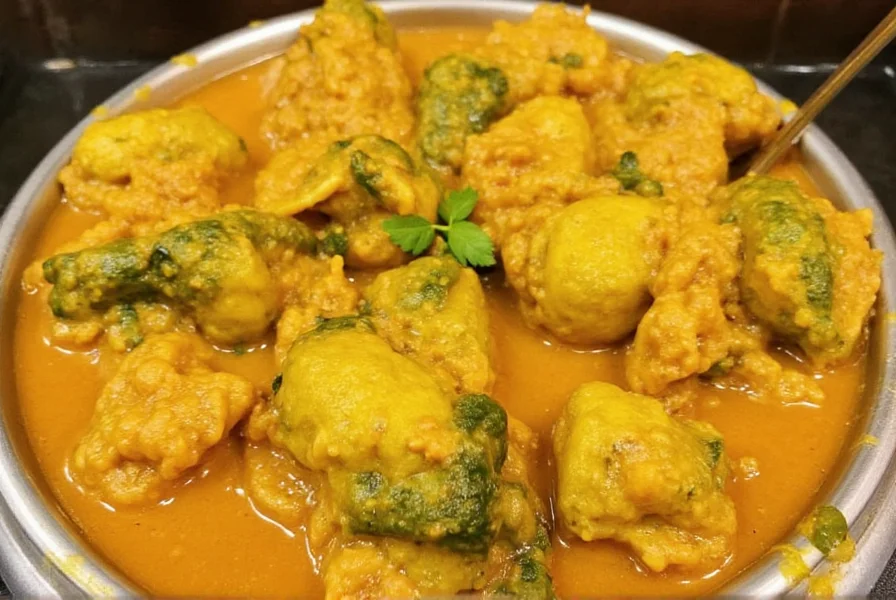When exploring where does curry come from, it's essential to understand that what Western cultures recognize as “curry” represents a complex culinary evolution rather than a single dish with one point of origin. The concept we call curry today emerged from centuries of cultural exchange, adaptation, and colonial interpretation of diverse cooking traditions across South and Southeast Asia.
The Linguistic Origins of “Curry”
The term “curry” entered the English language during the British colonial period in India. It originates from the Tamil word “kari” (கறி), which simply means “sauce” or “relish for rice.” Early Portuguese explorers in the 1500s adopted a version of this word (“caril”), which then influenced the English term. British colonists in the 18th and 19th centuries applied “curry” as a blanket term for the wide variety of spiced dishes they encountered across the Indian subcontinent.
Crucially, in India itself, you won't find restaurants serving “curry” as a menu item. Instead, each region has its own distinct dishes with specific names like masala, jhol, saagu, or khurma. The concept of “curry” as a single category of food is primarily a Western construct.
Pre-Colonial South Asian Culinary Traditions
Centuries before the term “curry” entered Western vocabulary, South Asian cooking already featured sophisticated spiced dishes. Ancient Indian texts dating back to 2500 BCE reference the use of turmeric, ginger, and garlic in cooking. The Indus Valley Civilization shows evidence of spice processing, and by the Maurya Empire (322–185 BCE), complex spice blends were already in use.
Traditional cooking methods varied significantly by region:
- In coastal South India, dishes featured coconut milk and tamarind
- Northern regions used yogurt and cream-based sauces
- Eastern regions incorporated mustard oil and poppy seeds
- Western regions featured peanut and sesame-based preparations
| Region | Local Name | Key Ingredients |
|---|---|---|
| South India | Kuzhambu, Sambar | Tamarind, coconut, curry leaves |
| North India | Shahi paneer, Rogan josh | Yogurt, cream, garam masala |
| Thailand | Massaman, Panang | Coconut milk, galangal, kaffir lime |
| Japan | Kare raisu | Roux-based, mild spices |
How Curry Spread Globally
The globalization of curry began with European colonial expansion. British colonists brought back simplified versions of Indian dishes, leading to the creation of “curry powder” in the 18th century – a standardized spice blend that never existed in traditional Indian cooking. This commercialized version made “curry” accessible worldwide but stripped it of regional diversity.
Other pathways for curry's global spread include:
- Indentured laborers from India brought their cooking traditions to Caribbean islands, creating dishes like Jamaican curry goat
- South Indian traders introduced curry concepts to Southeast Asia centuries before European contact
- Japanese curry developed after British sailors introduced roux-based sauces in the late 19th century
- African adaptations emerged through trade routes connecting East Africa with Indian merchants
Common Misconceptions About Curry's Origins
Several persistent myths surround curry's history that deserve clarification:
Myth: Curry is an authentic Indian dish category.
Reality: Indians don't categorize their food as “curry.” The term was imposed by outsiders to describe diverse regional dishes.
Myth: All curry contains curry powder.
Reality: Traditional preparations use freshly ground spices specific to each dish. Curry powder is a British invention for mass production.
Myth: Thai curry and Indian curry are essentially the same.
Reality: Thai curry paste (made with fresh herbs, chilies, and shrimp paste) differs fundamentally from Indian spice blends, with separate culinary lineages.
Modern Interpretations and Cultural Significance
Today, curry represents one of the world's most successful culinary adaptations. Each region has transformed the concept to reflect local tastes and ingredients while maintaining core elements of spiced sauce-based dishes. In the UK, chicken tikka masala has been called Britain's national dish. Japan has made curry rice a beloved comfort food. The Caribbean developed its own fiery curry variations using local peppers.
Understanding where curry comes from requires recognizing it as a living culinary tradition rather than a fixed recipe. The history of curry reflects broader patterns of cultural exchange, adaptation, and the complex legacy of colonialism in food traditions. When exploring authentic curry meaning and origin, we discover not a single point of origin but a rich tapestry of regional cooking traditions that have influenced each other for centuries.

Exploring Authentic Curry Traditions
For those interested in moving beyond the simplified Western concept of curry, exploring regional specialties offers a more authentic experience:
- Try making South Indian sambar, a lentil-based vegetable stew with tamarind
- Experiment with Thai red curry paste made from fresh ingredients rather than store-bought paste
- Discover Goan vindaloo, which features vinegar and chili peppers unlike British versions
- Sample Japanese kare, which has a distinctive sweet, thick consistency
- Explore East African pilau, which shows Indian spice influences adapted to local ingredients
By understanding the true origins of curry and its diverse regional expressions, we gain appreciation for the rich culinary heritage that has been simplified under this single term. The next time someone asks where does curry come from, you can share the nuanced story of how a Tamil word became a global culinary phenomenon through centuries of cultural exchange.










 浙公网安备
33010002000092号
浙公网安备
33010002000092号 浙B2-20120091-4
浙B2-20120091-4